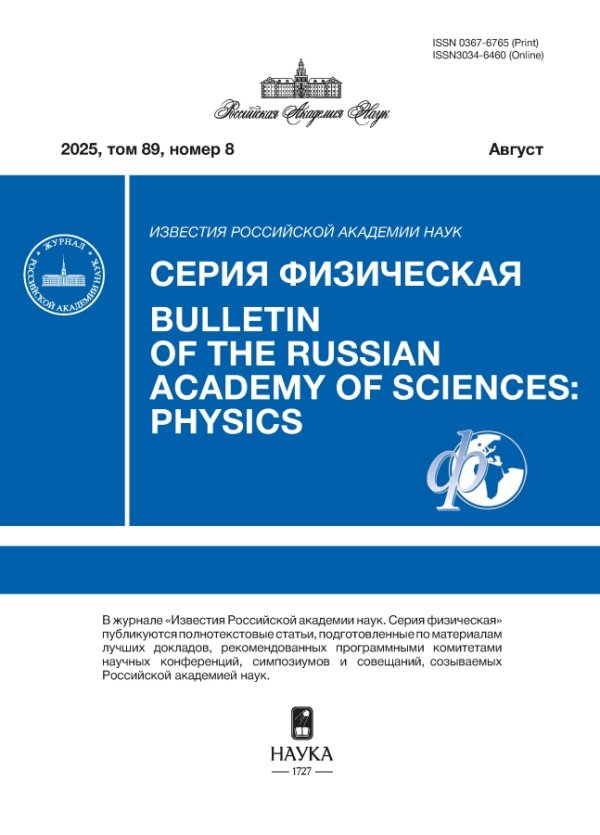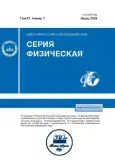Efficiency of mechanisms for the formation of sporadic Forbush decreases
- Authors: Petukhova A.S.1, Petukhov I.S.1, Petukhov S.I.1
-
Affiliations:
- Shafer Institute of Cosmophysical Research and Aeronomy of the Siberian Branch of the Russian Academy of Sciences – a separate subdivision of the Federal Research Center “Yakutsk Scientific Center of the Siberian Branch of the Russian Academy of Sciences”
- Issue: Vol 87, No 7 (2023)
- Pages: 1035-1037
- Section: Articles
- URL: https://journals.rcsi.science/0367-6765/article/view/135444
- DOI: https://doi.org/10.31857/S0367676523701843
- EDN: https://elibrary.ru/OSNZZJ
- ID: 135444
Cite item
Full Text
Abstract
From the measurements of the neutron monitors world network in the period 1996–2018, 31 strong Forbush decreases (>5%) were identified that satisfy the accepted event selection criterion. The superposed epoch analyses is used to determine the consistent spatial distributions of the solar wind parameters and the decrease in cosmic ray density. It has been established that the contributions of the formation mechanisms of the Forbush decrease differ greatly in two groups of events. The difference may be since the formation of the Forbush depression in one group occurs in the frontal part, and in the other group in the peripheral part of the disturbance.
About the authors
A. S. Petukhova
Shafer Institute of Cosmophysical Research and Aeronomy of the Siberian Branch of the Russian Academyof Sciences – a separate subdivision of the Federal Research Center “Yakutsk Scientific Center
of the Siberian Branch of the Russian Academy of Sciences”
Email: i_van@ikfia.ysn.ru
Russia, 677027, Yakutsk
I. S. Petukhov
Shafer Institute of Cosmophysical Research and Aeronomy of the Siberian Branch of the Russian Academyof Sciences – a separate subdivision of the Federal Research Center “Yakutsk Scientific Center
of the Siberian Branch of the Russian Academy of Sciences”
Author for correspondence.
Email: i_van@ikfia.ysn.ru
Russia, 677027, Yakutsk
S. I. Petukhov
Shafer Institute of Cosmophysical Research and Aeronomy of the Siberian Branch of the Russian Academyof Sciences – a separate subdivision of the Federal Research Center “Yakutsk Scientific Center
of the Siberian Branch of the Russian Academy of Sciences”
Email: i_van@ikfia.ysn.ru
Russia, 677027, Yakutsk
References
- Kilpua E., Koskinen H.E.J., Pulkkinen T.I. // Living Rev. Solar Phys. 2017. V. 14. No. 1. P. 5.
- Lockwood J.A., Webber W.R., Debrunner H. // J. Geophys. Res. 1991. V. 96. P. 11587.
- Krittinatham W., Ruffolo D. // The Astrophys. J. 2009. V. 704. No. 1. P. 831.
- Benella S., Laurenza M., Vainio R. et al. // The Astrophys. J. 2020. V. 901. P. 21.
- Laitinen T., Dalla S. // 43rd COSPAR Sci. Assembly. (Sydney, 2021). Art. No. 866.
- Петухов И.С., Петухов С.И. // Изв. РАН. Сер. физ. 2015. Т. 79. № 5. С. 694; Petukhov I.S., Petukhov S.I. // Bull. Russ. Acad. Sci. Phys. 2015. V. 79. No. 5 P. 640.
- Petukhova A.S., Petukhov I.S., Petukhov S.I. // The Astrophys. J. 2019. V. 880. P. 17.
- Petukhova A., Petukhov I., Petukhov S. // Space Weather. 2020. V. 18. Art. No. e2020SW002616.
- Badruddin, Venkatesan D., Zhu B.Y. // Solar Phys. 1991. V. 134. P. 203.
- Richardson I.G., Cane H.V. // Solar Phys. 2011. V. 270. No. 2. P. 609.
- Белов А.В., Абунин А.А., Абунина М.А. и др. // Изв. РАН. Сер. физ. 2015. Т. 79. № 5. С. 691; Belov A.V., Abunin A.A., Abunina M.A. et al. // Bull. Russ. Acad. Sci. Phys. 2015. V. 79. No. 5. P. 637.
Supplementary files










